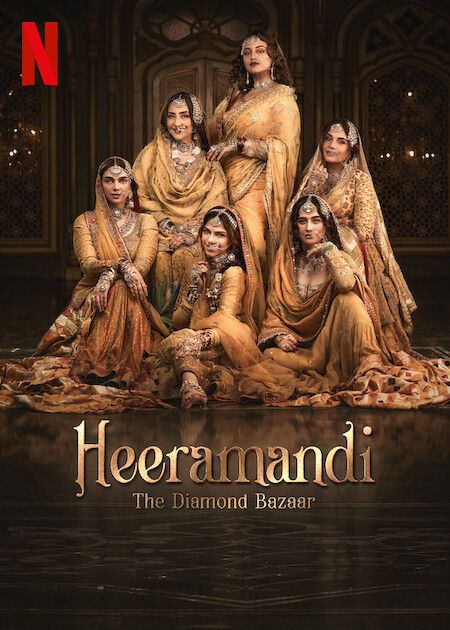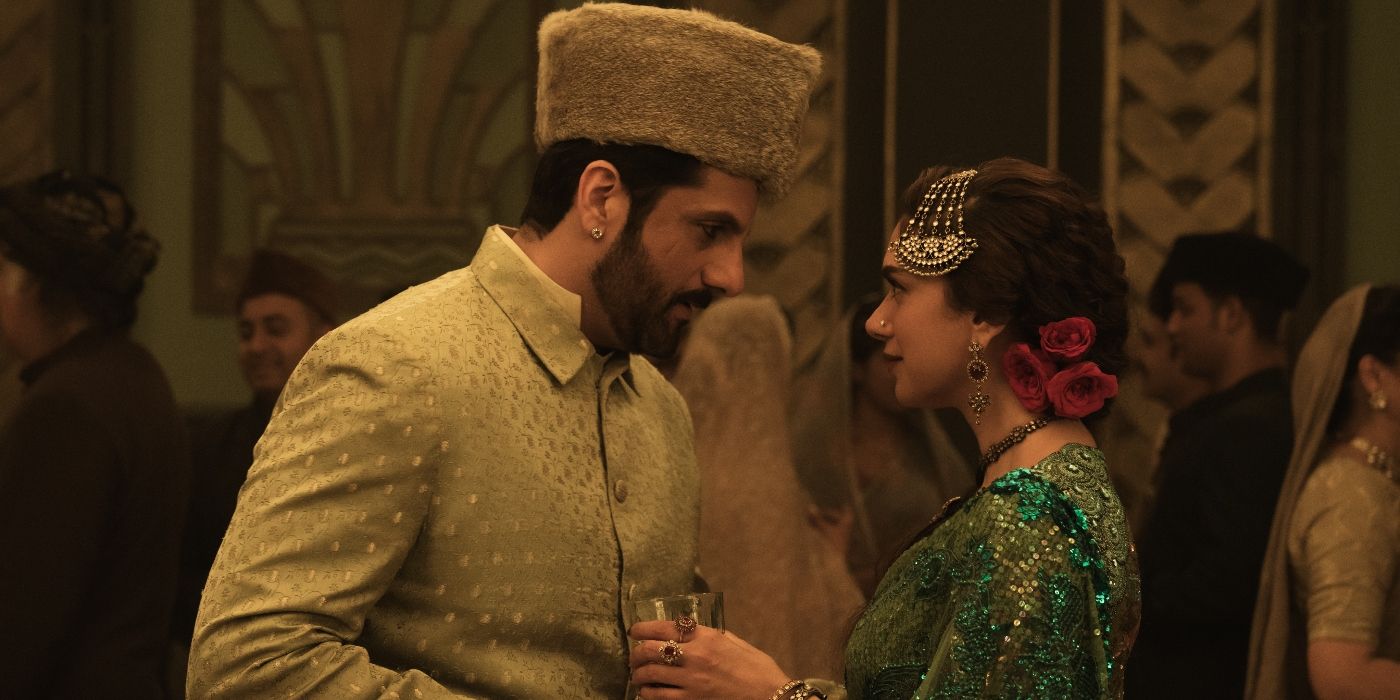There’s a reason why it’s called the “diamond bazaar.”
The Big Picture
- Sanjay Leela Bhansali brings the decadent lifestyle of pre-independence India’s courtesans to life in Netflix’s
Heeramandi
. - Heeramandi once thrived as a cultural hub for elite artisans, tied to royal families and offering education in royal etiquette.
- The series spotlights the overlooked contributions of the courtesans to the independence struggle, avoiding a focus on their downfall.
Known for his period dramas set in royal, grand settings, BAFTA-nominated creator Sanjay Leela Bhansali has chosen to tell the tale of the lavish lifestyle of the courtesans of pre-independence India for his first Netflix series. Commonly known as tawaifs, these courtesans ruled over the city of Lahore, now situated in Pakistan. After having explored life in the red-light district of Mumbai in the 2022 Alia Bhatt movie Gangubai Kathiawadi, Bhansali opted to go back to an era when the courtesans of Heeramandi (which translates to “the diamond bazaar”) were celebrated artists and yielded significant control in the socio-political and economic structure of the society. If Netflix’s Heeramandi looks larger than life, it’s most likely because the courtesans (portrayed by the likes of Indian actresses Manisha Koirala and Sonakshi Sinha) are inspired by real-life figures.

Heeramandi: The Diamond Bazaar (2024)
Exploring the lives of women in a renowned marketplace, the series delves into their daily struggles and triumphs amid the glittering world of diamond trading. The narrative highlights their complex relationships and the societal changes sweeping through India, offering a dramatic exploration of resilience and transformation.
- Release Date
- May 1, 2024
- Cast
- Manisha Koirala , Sonakshi Sinha , Aditi Rao Hydari , Sharmin Segal , Sanjeeda Sheikh
- Main Genre
- Drama
- Seasons
- 1
- Creator(s)
- Sanjay Leela Bhansali
The Real-Life Heeramandi Is Brought to Life in Netflix’s Series
Before Heeramandi, Bhansali had built a reputation for bringing to life chapters from history through his cinematic vision, which is awe-inspiring on the big screen. His biggest successes in the form of 2015’s Bajirao Mastani and 2018’s Padmaavat are prime examples. Similar to his previous projects, a lavish set, a historically inspired setting, and an emotion-driven story are all part of Heeramandi’s makeup. Today, known as the red-light district of Lahore, Heeramandi was once a hub for artists where culture thrived. After the arrival of the British in pre-independence India, the area quickly turned into a center for prostitution and exploitation. In an interview with TIME, Bhansali said that he wished to bring forth the story of the women of Heeramandi who were oft-considered merely entertainers.
Commonly, it’s believed that Heeramandi owes its name to Heera Singh Dogra, son of Dhian Singh Dogra, Prime Minister during Maharaja Ranjit Singh’s reign. The area’s heritage could be traced back to the Mughals who cultivated the area as a center for women artisans brought from Afghanistan and Uzbekistan, according to The Statesman. The neighborhood’s proximity to the Lahore Fort helped establish its status as the “Shahi Mohalla,” or the “Royal Neighborhood,” something mentioned multiple times in the Netflix series. A home to the artisans known as tawaifs, the area enjoyed patronage from the royal families and its nawabs. As Heeramandi suggests, it was even common for royal families to send their young nawabs to Heeramandi to learn royal etiquette. In fact, the ceremony of “nath utrai” involves young royals bidding for the nose ring of a young tawaif who loses her virginity to the highest bidder. This was considered a coming-of-age for both young tawaifs and young nawabs.
Culture and Art Thrived in Heeramandi, Once Upon a Time
As beautifully captured by Bhansali and his team in the Netflix series, Heeramandi was home to master artisans skillfully trained in classical dances and music. Particularly, the mujra dance form has been a staple of Heeramandi since the time Mughals frequented the courtesans. Being close to the royals and the royal patronage extended the tawaifs an elite status in the society, via TIME. It was common practice to invite the tawaifs to royal family events as a mark of respect. It was also common for the tawaifs to be mistresses of their royal patrons. Similar to the depiction in Heeramandi, it is possible that some of the tawaifs could have given birth to royal heirs. In Heeramandi, Mallikajaan (Koirala), the most powerful tawaif of Heeramandi, is shown to have given birth to the nawab Zorawar Ali Khan (Adhyayan Suman).
Heeramandi Suffered Under Colonial British Rule
As suggested by TIME, the fall in grace of Heermandi began with the arrival of the British, who brought with them Western ideas of morality that pushed women down to the status of prostitutes. Moreover, as shown in Heeramandi, the increasing dependence of the royals of pre-independence India on British favor directly ended up tying the fates of the tawaifs of Lahore with that of the British perception of the courtesans. Soon enough, the doors of Heeramandi opened to non-royals, with wealthy men gaining access to kothas (brothels), which once enjoyed royal patronage. From being the “Royal Neighborhood,” Heeramandi found itself the moniker of “Bazaar-e-Husn,” or Market of Beauty. Apart from turning into a prostitution hub under the British, the area also provided some great talent for the film industry, with the courtesans turning to other means of livelihood. Well-trained in arts and music, some of the tawaifs found great fame through this choice. A similar trend also followed in other parts of India where the tawaif culture was part of the lifestyle once.
Netflix’s Series Also Focuses on Heeramandi’s Lesser Known Contributions
Bhansali’s Heeramandi avoids focusing on the downfall of the tawaifs of Lahore and rather chooses to stay keen on the power struggles and dynamics between the competing courtesans in times when the country was undergoing a great change. Through Bibbojaan’s (Aditi Rao Hydari) character, the director also focuses on a less-remembered contribution of the courtesans. As important members of the pre-independence society, the courtesans played an important part in the independence struggle, contributing through resources, shelter, and support. As suggested by TIME’s report, Bibbojaan is inspired by the real-life tawaif Azizan Bai, who assisted the local rebels in the 1857 uprising. In his interview with the magazine, Bhansali strongly presents his commitment to showing this ignored aspect of the lives of the courtesans – something also reflected through the rich characters depicted in Heeramandi.
Bhansali’s Heeramandi on Netflix presents a rich concoction of history, music, and culture to give a beautiful peek into the real lives of the courtesans who enjoyed great power and prominence only nearly a century ago. The director’s auteur style, which feels custom-made for larger-than-life stories, helps bring to life the story of the tawaifs in vibrant colors. Often seen through a singular lens, the lives of the courtesans are given different dimensions by director Bhansali and writer Moin Beg in Netflix’s latest eight-episode period drama.
All episodes of Heeramandi are available to stream on Netflix.
This article was originally published on collider.com



